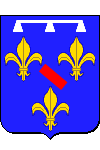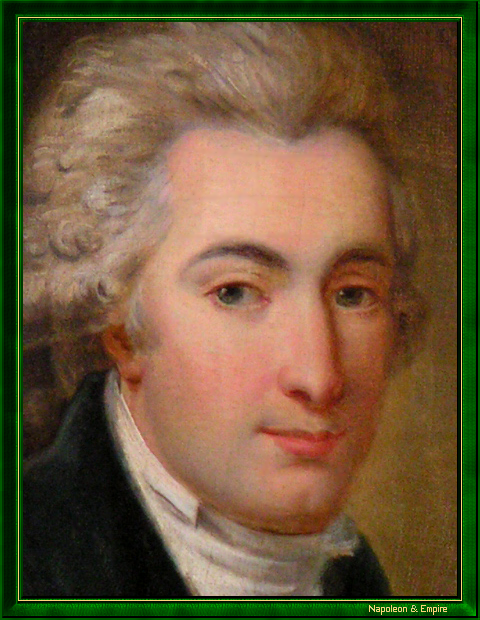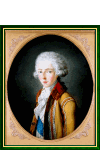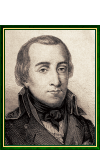Louis Antoine de Bourbon-Condé, Duke of Enghien
Cross of Saint Louis
Pronunciation:

Born in Chantilly in 1772, son of Louis VI Henri de Bourbon-Condé and Louise Marie Thérèse Bathilde d'Orléans, Louis-Antoine-Henri de Bourbon emigrated immediately after the fall of the Bastille, joining the army of émigrés organized by his grandfather, the Prince de Condé, and his father, the Duc de Bourbon, at Worms on the banks of the Rhine.
In 1792, he led the Royal French Army, which took part in the invasion of France alongside the German and Austrian armies, under the chief command of the Duke of Brunswick. In 1793, he fought on the Rhine. In 1794, he was awarded the Cross of Saint-Louis for his valiant conduct on all these occasions.
Like his entire army, he entered the service of England in 1795, and fought in Swabia the following year.
After the Treaty of Campo-Formio and the end of the First Coalition, the Condé army placed itself at the service of Russia, fighting in the Rhineland. When Tsar Paul I withdrew from the second coalition, the Condés and their troops once again joined the English army, before taking part in hostilities in Bavaria.
In 1801, as the conflicts subsided, the army was disbanded. The Duc d'Enghien moved to Ettenheim in Baden, not far from the French border.
In January 1804, the arrest and interrogation of royalist conspirators close to Georges Cadoudal revealed to the Minister of Police, Joseph Fouché, the existence of a new conspiracy to seize the person of Napoleon Bonaparte. Cadoudal, Charles Pichegru and Jean-Victor Moreau then had to seize power and await the arrival of a prince from the House of Bourbon. Deeming the Comte d'Artois uninterested in risking his life in such an adventure - the memory of the Quiberon landing having remained vivid in his mind - Charles-Maurice de Talleyrand, with the support of Fouché, convinced Napoleon Bonaparte that it was the Duc d'Enghien.
The First Consul, keen to set an example, decided to kidnap the Duke, who was residing on the territory of the Duchy of Baden, without worrying about provoking a diplomatic incident. More than a thousand men, commanded by General Michel Ordener, carried out this order on the night of March 15 to 16, 1804.
The Duc d'Enghien was taken to the Château de Vincennes , where he was summarily tried by a hastily constituted military tribunal presided over by general Pierre-Augustin Hulin, a former Bastille victor. He was sentenced to death and executed in the château moat on March 21, 1804.
As the only son, he marked the end of the Bourbon-Condé branch.
The duke rests for eternity in the Sainte-Chapelle at Château de Vincennes .
"Louis Antoine Henri de Bourbon-Condé, Duke of Enghien". Nineteenth-Century French School.

Antoine Boulay de la Meurthe stigmatized this execution, which in his eyes was not only a crime, but worse, a fault. Indeed, it provoked a wave of indignation across Europe. But above all, it definitively ruined royalist dreams of finding in Napoleon Bonaparte a new George Monck, and of seeing him favor the restoration of the Ancien Régime. By prohibiting any rapprochement between Napoleon Bonaparte and the Bourbons, it also effectively served the immediate interests of certain former revolutionaries who had rallied to the regime of the future Napoleon I, whether they were regicides like Fouché, or not, like Talleyrand.
Other portraits

"Louis Antoine Henri de Bourbon-Condé, Duke of Enghien". Pastel attributed to Antoine Vestier (Avallon 1740 - Paris 1824).

"Louis Antoine Henri de Bourbon-Condé, Duke of Enghien" by Nanine Piètre born Vallain (1767-1815).

"Louis Antoine Henri de Bourbon-Condé, Duke of Enghien". Burning of the nineteenth century.